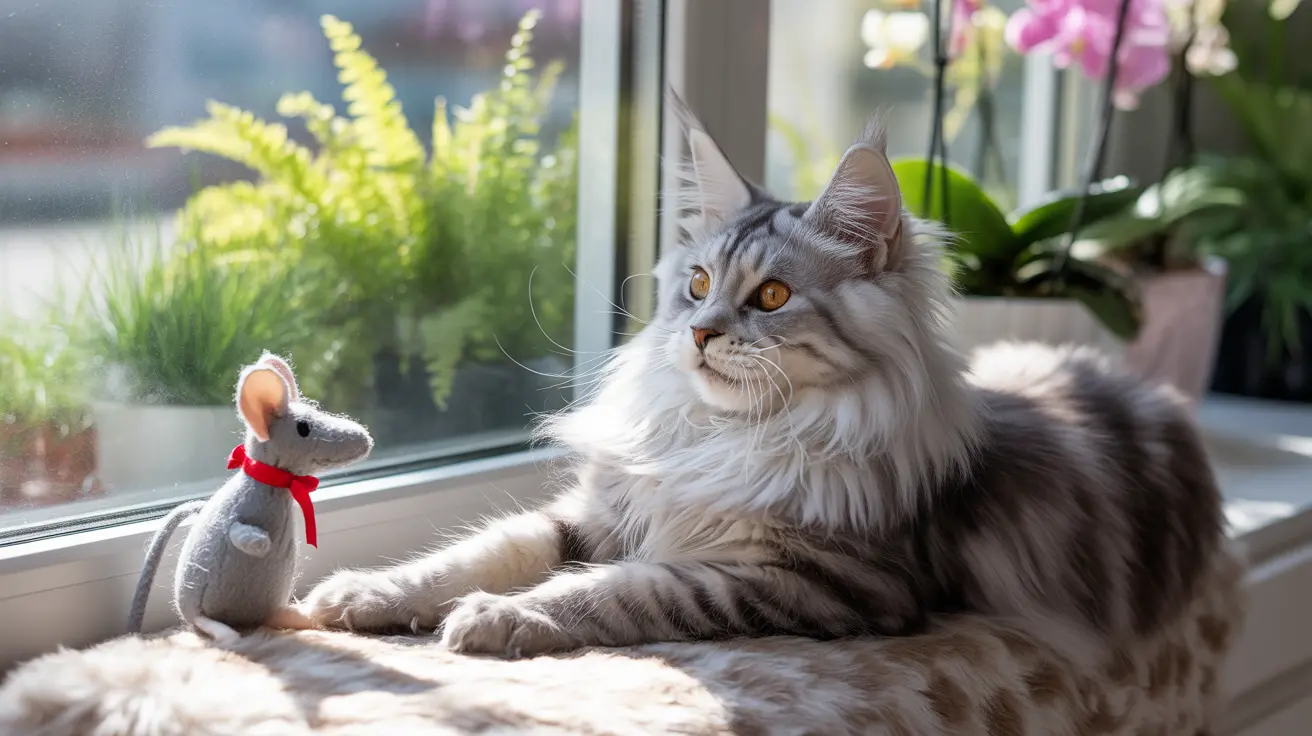In the rich tapestry of Catholic history, few figures have captured the hearts of cat lovers quite like St. Gertrude of Nivelles. Born in 626 to a noble Frankish family, this remarkable woman would become not only a pioneering religious leader but also the cherished unofficial patron saint of cats, earning devotion from pet owners across centuries.
While the Catholic Church never officially designated her as the patron saint of cats, St. Gertrude's connection to our feline friends has deep historical roots and continues to resonate with cat enthusiasts worldwide. Let's explore the fascinating story of this beloved saint and understand why she holds such a special place in the hearts of cat lovers.
The Early Life of St. Gertrude
Born into privilege as the daughter of Pepin of Landen, Gertrude showed extraordinary conviction from an early age. At just ten years old, she rejected an arranged marriage, choosing instead to dedicate her life to religious service. This bold decision would set the stage for her future role as a prominent religious leader and eventually, a beloved patron saint.
Following her father's death, Gertrude's mother took the remarkable step of establishing the Abbey of Nivelles, where Gertrude would eventually serve as abbess. Under her leadership, the abbey became renowned for its hospitality, charitable works, and dedication to learning.
The Connection Between St. Gertrude and Cats
St. Gertrude's association with cats stems from her well-documented role as a protector against rats and mice. During medieval times, these rodents posed serious threats to food supplies and public health. Her prayers were often sought for protection against these pests, naturally leading to an association with cats, nature's own rodent controllers.
Over time, this connection deepened as artists began depicting St. Gertrude with cats in religious artwork and icons. Today, many cat owners and animal welfare organizations look to her as a spiritual guardian for their beloved pets.
Modern Devotion and Celebrations
March 17th, St. Gertrude's feast day, has become a significant date for cat lovers worldwide. Many animal shelters and pet organizations hold special events and blessing ceremonies on this day, invoking her protection for cats in need. The timing coincides with St. Patrick's Day, creating a unique celebration for those who cherish both Irish heritage and feline companionship.
Cultural Impact and Legacy
St. Gertrude's influence extends beyond religious circles into popular culture. Contemporary artists create medals, prayer cards, and devotional items featuring her image with cats, while social media communities share her story as a symbol of the deep bond between humans and their feline companions.
Frequently Asked Questions
Why is St. Gertrude of Nivelles considered the patron saint of cats even though it's not official?
While not officially designated by the Catholic Church, St. Gertrude's reputation as a protector against rodents naturally evolved into a connection with cats. This association, combined with centuries of popular devotion and artistic depictions, has cemented her role as the unofficial patron saint of cats.
How did St. Gertrude's association with protecting against rats and mice evolve into a connection with cats?
Her historical role in protecting against rodents created a natural link to cats, who serve as natural predators of rats and mice. Over time, this connection strengthened as people began seeking her intercession for their feline companions.
What is the significance of St. Gertrude's feast day for cat owners and cat lovers?
March 17th has become a special day for cat lovers to celebrate their pets and seek blessings for their protection. Many animal shelters and organizations hold special events and blessing ceremonies on this day.
Are there traditional prayers or rituals involving St. Gertrude to protect cats from illness or danger?
Yes, many cat owners and animal welfare workers invoke St. Gertrude's protection through specific prayers and blessings, particularly for sick, homeless, or shelter cats. These rituals often combine traditional Catholic prayers with special intentions for feline well-being.
How is St. Gertrude depicted in art and icons related to her role as a protector of cats?
Modern artistic representations often show St. Gertrude in her abbess robes, surrounded by or holding cats. While earlier medieval art depicted her with mice or rats at her feet, contemporary icons emphasize her connection to cats as their spiritual guardian.
Conclusion
St. Gertrude of Nivelles continues to inspire and comfort cat lovers across the globe. Whether through formal devotion or simple appreciation, her legacy as a protector of cats endures, offering a unique bridge between spiritual tradition and the modern love for our feline companions.






